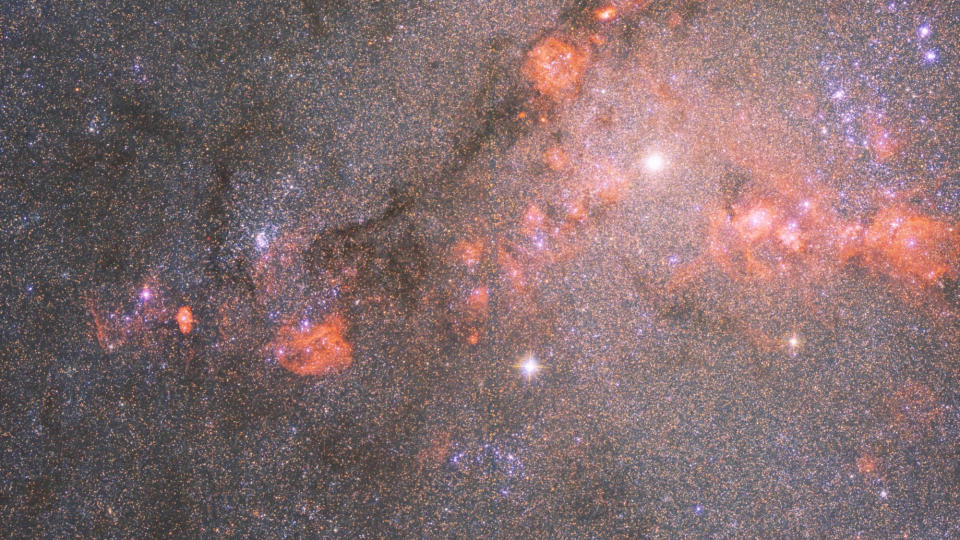When you buy through links on our articles, Future and its syndication partners may earn a commission.


A nearby galaxy is shining with star formation in a new image from the Hubble Space Telescope.
The spiral galaxy Messier 33 (M33), also known as the Triangulum Galaxy, is the third-largest member of the Local Group of galaxies, after the Andromeda galaxy (M31) and our own Milky Way. Measuring only 60,000 light-years across, M33 is about half the size of the Milky Way.
Located nearly 3 million light years from Earth, the Triangulum Galaxy is regarded as a “hotbed of starbirth,” forming stars at a rate 10 times higher than the neighboring Andromeda galaxy, according to a statement from NASA.
“Interestingly, M33’s neat, organized spiral arms indicate little interaction with other galaxies, so its rapid starbirth is not fueled by galactic collision, as in many other galaxies,” NASA officials said in the statement.
Instead, new stars are born from ample amounts of dust and gas within the galaxy. Collisions between massive ionized hydrogen clouds, known as H-II regions, create high-mass stars, which can be seen in the new Hubble image. The large reddish clouds in the Hubble photo represent the pockets of ionized hydrogen, which, along with the dark streams of gas, fuel the galaxy’s rapid star formation.
Related: The best Hubble Space Telescope images of all time!
“The apparent graininess of the image is actually swarms of countless stars,” NASA officials said in the statement. “M33 is one of less than 100 galaxies close enough for telescopes like Hubble to resolve individual stars, as evident here.”
RELATED STORIES:
— Hubble Space Telescope: Pictures, facts & history
— Hubble Telescope tracks a dwarf galaxy’s stars to map out dark matter
— A billionaire wanted to save the Hubble Telescope — here’s why NASA politely declined
However, unlike most spiral galaxies, M33 lacks a central bulge, which would otherwise house a supermassive black hole. As a result, M33 is classified as a “pure disk galaxy,” which is a type of galaxy that is believed to make up around 15-18% of all galaxies in the universe.
The new Hubble image, released on Aug. 21, was taken as part of a larger study on the interstellar medium, star-formation processes and stellar evolution, which scientists hope will offer insight on the possible future collision between M33 and the Andromeda and Milky Way galaxies.
